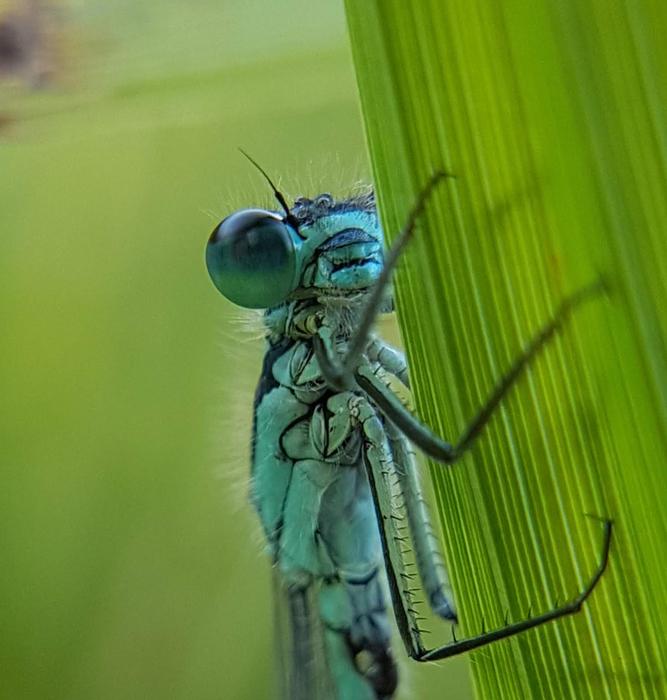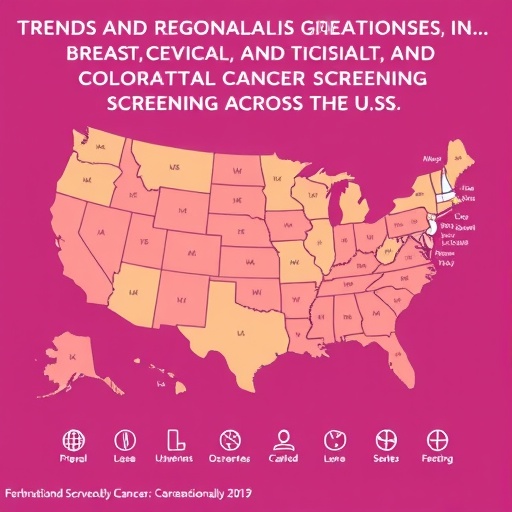Improvements in freshwater biodiversity across England’s rivers have corresponded to reductions in pollution levels of key metals like zinc and copper. A comprehensive research initiative led by the UK Centre for Ecology & Hydrology has provided crucial insights into this relationship, suggesting that decreases in coal burning and heavy industry have played a significant role in ameliorating the health of aquatic ecosystems. These findings are pivotal for understanding the dynamics of freshwater environments and their resilience in the face of industrial impact.
Freshwater invertebrates, such as damselflies, serve as vital indicators of river health and biodiversity. Researchers have long relied on these organisms to assess ecological conditions in waterways. By analyzing extensive data from the Environment Agency—comprising approximately 65,000 individual observations across 1,457 sites from 1989 to 2018—the researchers sought to unearth factors that have influenced invertebrate populations over the last few decades. This large dataset enabled the team to apply advanced statistical modeling techniques to explore various chemical and environmental variables affecting river ecosystems.
The comprehensive study indicated that the quality of freshwater is intrinsically linked to the concentrations of heavy metals present in the environment. Notably, while ammonia and organic material from wastewater were also identified as critical factors impacting invertebrate health, the strongest correlations were attributed to the presence of zinc and copper. This correlation underscores the need for policymakers to prioritize metal contamination as an essential aspect of ecological restoration efforts.
Declines in the levels of zinc and copper present in England’s rivers have been attributed to multiple interrelated factors that emerged particularly after the 1980s. Firstly, the significant reduction in coal burning has fostered improvements in air quality, resulting in decreased atmospheric metal pollution that historically entered waterways through acid rain. Secondly, the decline of heavy industries—previously major contributors to metal discharge through both atmospheric emissions and wastewater—has also reduced the influx of these pollutants into freshwater systems.
Additionally, the reduction in consumer products containing zinc and copper has contributed to diminished levels of these metals in sewage effluents. As societal practices evolve away from using harmful substances, the resulting decline in pollution aligns directly with improved biodiversity within rivers. The collective impact of these changes serves as a testament to the potential for environmental restoration through targeted pollution control strategies.
Professor Andrew Johnson, a leading environmental research scientist at UKCEH, stresses the significance of these findings for river management and policy formulation. He points out the urgent need for action to mitigate metal pollution, advocating for continued efforts to further reduce zinc and copper concentrations in aquatic environments. The implications of this research extend beyond mere academic interest; they hold vital relevance for governmental agencies and conservationists aiming to improve freshwater ecosystems sustainably.
Despite the observable improvements, stakeholders must remain vigilant, as historical contamination from abandoned mines still manifests in some river systems, particularly affecting biodiversity downstream. With the DEFRA’s commitment to halving the lengths of rivers impacted by this type of pollution by 2038, there exists a clear policy directive aligned with the scientific insights gained from this research. Continuing investments in environmental sustainability will be crucial for achieving these ambitious goals.
Beyond addressing metal pollution, advancements in wastewater treatment technologies have also positively influenced river biodiversity. Regulations such as the Urban Wastewater Treatment Directive have compelled upgrades to effluent processing, enabling better removal of general organic matter and ammonia. As a result, a healthier environment for aquatic species emerges, showcasing the interplay between technological progress and ecological health.
Earlier methodologies for studying chemical impacts on wildlife often relied heavily on laboratory experiments, which can overlook complex ecological interactions. However, the current study’s approach, which emphasizes long-term river monitoring data, allows direct insights into real-world wildlife responses. This shift towards empirical data-driven investigation enhances our understanding of ecological dynamics and points towards more effective strategies for managing and preserving biodiversity.
The researchers also highlighted that the Environment Agency’s measurement practices do not account for every possible contaminant that could affect river health. Nevertheless, their analysis included important proxies, such as wastewater exposure and land use patterns, which are indicative of pesticide usage and other chemical stresses affecting freshwater systems. These inclusions further cement the need for comprehensive monitoring to safeguard aquatic ecosystems.
The paper published in Environmental Science & Technology demonstrates that while there have been substantial gains in biodiversity over decades, much remains to be achieved. Future efforts must not only sustain current momentum but also strive for rigorous action against any lingering pollutants that threaten these precious ecosystems. Stakeholders in research, government, and conservation must collaborate to maintain and enhance the health of England’s rivers.
In conclusion, this research encapsulates a critical juncture in our understanding of freshwater ecology. It emphasizes that substantial improvements in biodiversity can be achieved through informed policy and dedicated action to tackle specific pollutants. The synergy between scientific evidence and governmental action offers a hopeful pathway towards revitalizing river systems, exemplifying how concerted societal efforts can yield profound environmental benefits.
Subject of Research: Freshwater biodiversity and metal pollution
Article Title: Zinc and copper have the greatest relative importance for river macroinvertebrate richness at a national scale
News Publication Date: 18-Feb-2025
Web References: Environmental Science & Technology
References: Johnson et al. 2025, DOI: 10.1021/acs.est.4c06849
Image Credits: Steve Thackeray
Keywords: Freshwater ecology, Biodiversity, Water pollution, Zinc, Copper, Invertebrates, Environmental Science, Wastewater treatment, Ecosystem health
Tags: data analysis of river health indicatorsenhanced biodiversity in England’s riversenvironmental variables affecting freshwater ecosystemsimpact of industrial activities on aquatic ecosystemsimprovements in river health linked to pollution controllong-term ecological monitoring of riversmetal pollution reduction in freshwater ecosystemsrelationship between heavy metals and river biodiversityrole of freshwater invertebrates in river healthsignificance of damselflies as ecological indicatorsstatistical modeling in environmental scienceUK Centre for Ecology and Hydrology research findings





